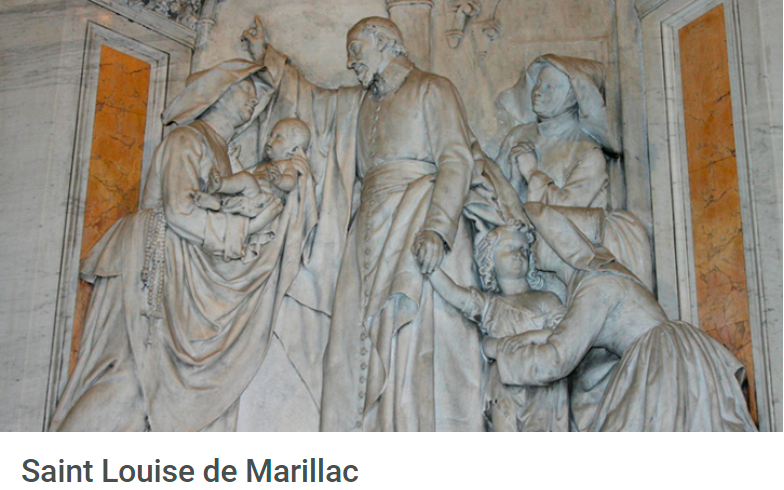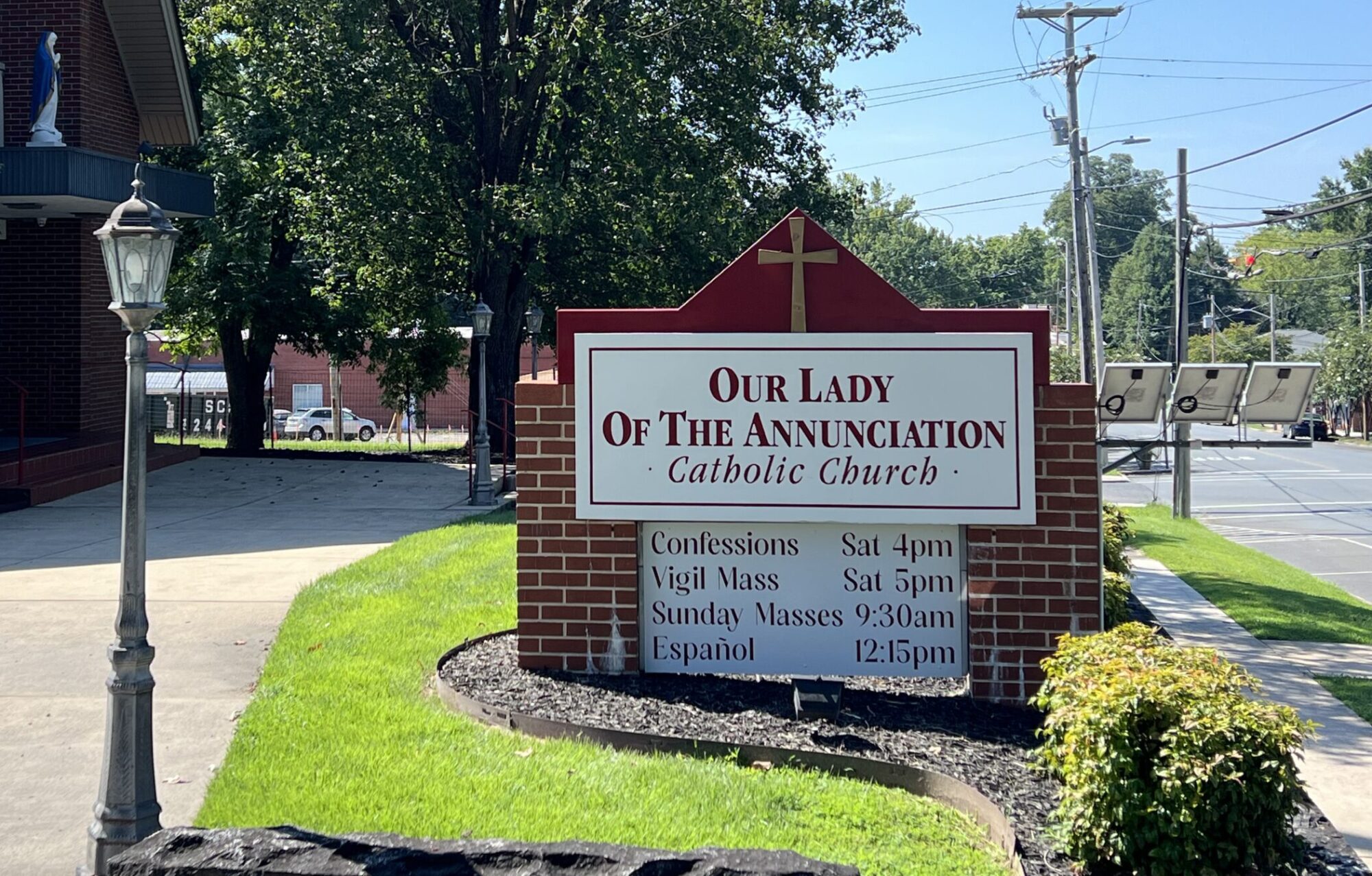
Dear Church . . .

//Clergy Coaching Network//
Saint of the Day – July 18 – Saint Camillus de Lellis
Saint Camillus de Lellis’ Story (1550 – July 14, 1614)
Humanly speaking, Camillus was not a likely candidate for sainthood. His mother died when he was a child, his father neglected him, and he grew up with an excessive love for gambling. At 17, he was afflicted with a disease of his leg that remained with him for life. In Rome he entered the San Giacomo Hospital for Incurables as both patient and servant, but was dismissed for quarrelsomeness after nine months. He served in the Venetian army for three years.
Then in the winter of 1574, when he was 24, Camillus gambled away everything he had—savings, weapons, literally down to his shirt. He accepted work at the Capuchin friary at Manfredonia, and was one day so moved by a sermon of the superior that he began a conversion that changed his life. He entered the Capuchin novitiate, but was dismissed because of the apparently incurable sore on his leg. After another stint of service at San Giacomo, he came back to the Capuchins, only to be dismissed again, for the same reason.
Again, back at San Giacomo, his dedication was rewarded by his being made superintendent. Camillus devoted the rest of his life to the care of the sick. Along with Saint John of God he has been named patron of hospitals, nurses, and the sick. With the advice of his friend Saint Philip Neri, he studied for the priesthood and was ordained at the age of 34. Contrary to the advice of his friend, Camillus left San Giacomo and founded a congregation of his own. As superior, he devoted much of his own time to the care of the sick.
Charity was his first concern, but the physical aspects of the hospital also received his diligent attention. Camillus insisted on cleanliness and the technical competence of those who served the sick. The members of his community bound themselves to serve prisoners and persons infected by the plague as well as those dying in private homes. Some of his men were with troops fighting in Hungary and Croatia in 1595, forming the first recorded military field ambulance. In Naples, he and his men went onto the galleys that had plague and were not allowed to land. He discovered that there were people being buried alive, and ordered his brothers to continue the prayers for the dying 15 minutes after apparent death.
Camillus himself suffered the disease of his leg through his life. In his last illness, he left his own bed to see if other patients in the hospital needed help.
Reflection
Saints are created by God. Parents must indeed nurture the faith in their children; husbands and wives must cooperate to deepen their baptismal grace; friends must support each other. But all human effort is only the dispensing of divine power. We must all try as if everything depended on us. But only the power of God can fulfill the plan of God—to make us like himself.
Saint Camillus de Lellis is the Patron Saint of:
Hospitals
Nurses
Healthcare workers
Sick
Saint of the Day – March 8 – Saint John of God
Saint John of God’s Story (March 8, 1495 – March 8, 1550)
Having given up active Christian belief while a soldier, John was 40 before the depth of his sinfulness began to dawn on him. He decided to give the rest of his life to God’s service, and headed at once for Africa where he hoped to free captive Christians and, possibly, be martyred.
He was soon advised that his desire for martyrdom was not spiritually well based, and returned to Spain and the relatively prosaic activity of a religious goods store. Yet he was still not settled. Moved initially by a sermon of Saint John of Avila, he one day engaged in a public beating of himself, begging mercy and wildly repenting for his past life.
Committed to a mental hospital for these actions, John was visited by Saint John, who advised him to be more actively involved in tending to the needs of others rather than in enduring personal hardships. John gained peace of heart, and shortly after left the hospital to begin work among the poor.
He established a house where he wisely tended to the needs of the sick poor, at first doing his own begging. But, excited by the saint’s great work and inspired by his devotion, many people began to back him up with money and provisions. Among them were the archbishop and marquis of Tarifa.
Behind John’s outward acts of total concern and love for Christ’s sick poor was a deep interior prayer life which was reflected in his spirit of humility. These qualities attracted helpers who, 20 years after John’s death, formed the Brothers Hospitallers, now a worldwide religious order.
John became ill after 10 years of service, but tried to disguise his ill health. He began to put the hospital’s administrative work into order and appointed a leader for his helpers. He died under the care of a spiritual friend and admirer, Lady Ana Ossorio.
Reflection
The utter humility of John of God, which led to a totally selfless dedication to others, is most impressive. Here is a man who realized his nothingness in the face of God. The Lord blessed him with the gifts of prudence, patience, courage, enthusiasm, and the ability to influence and inspire others. He saw that in his early life he had turned away from the Lord, and, moved to receive his mercy, John began his new commitment to love others in openness to God’s love.
Saint John of God is the Patron Saint of:
Booksellers
Firefighters
Heart Patients
Hospitals
Nurses
Printers
Sick
Saint of the Day – July 18 – Saint Camillus De Lellis
Meditation of the Day – He Asks the Sick to Believe

“Often Jesus asks the sick to believe. He makes use of signs to heal: spittle and the laying on of hands, mud and washing. The sick try to touch him, ‘for power came forth from him and healed them all’. And so in the sacraments Christ continues to ‘touch’ us in order to heal us. Moved by so much suffering Christ not only allows himself to be touched by the sick, but he makes their miseries his own: ‘He took our infirmities and bore our diseases’. But he did not heal all the sick. His healings were signs of the coming of the Kingdom of God. They announced a more radical healing: the victory over sin and death through his Passover. On the cross Christ took upon himself the whole weight of evil and took away the ‘sin of the world’, of which illness is only a consequence. By his passion and death on the cross Christ has given a new meaning to suffering: it can henceforth configure us to him and unite us with his redemptive Passion.”—Catechism of the Catholic Church, 1504-05
//Catholic Company//
Why Do Catholics Use Holy Water?

Ever wonder why holy water is so widely used in parishes around the world? Find out here.
Holy water is so customary for Catholics that we sometimes don’t question why the Church uses it or the significance behind it. We most commonly use holy water when we walk into church and dip our fingers into a font to bless ourselves.
So what does holy water actually do, and why is it important?
Holy water is one of the Church’s most essential sacramentals. It’s blessed by God through a priest, with a rite of blessing that includes prayers of exorcism. This blessing elevates the water to a sacramental that helps us receive God’s grace when used faithfully. Not only is holy water used to give grace to God’s children, it is also used to help defend us in spiritual warfare.
Because of its power, holy water is used in almost every sacrament. For instance, in the Sacrament of Baptism, the priest pours holy water over an infant’s or new convert’s head. Holy water is also used for Anointing of the Sick. In weddings, the priest uses holy water to bless the couple’s rings. At funerals, the priest sprinkles holy water over the deceased person’s coffin.
So how can we truly appreciate holy water and enjoy the benefits of it? By incorporating it into our daily lives.
In addition to using holy water to bless ourselves when we enter a parish, we should also use it to bless our homes, our families, our work spaces, and anything that you use with the goal of glorifying God in your daily life.
//The Catholic Company//
Lord, Heal All Who Are Sick

//Today’s Prayers//
Saint of the Day – March 23rd – Saint Rafqa (Rebecca)

St. Rafqa / Rafka (Arabic for Rebecca) (1832–1914) was born in Himlaya, a Maronite village in the Lebanese mountains. She was an only child, and her mother died when she was seven. After her father’s remarriage there was much family discord as to whom Rafqa should marry. Not wanting to wed any of the men in question, she turned to God and entered religious life at the age of 21.
Rebecca had a great devotion to the Blessed Virgin Mary which she learned from her mother. She studied and served as a teacher for many years, but, after witnessing and surviving a massacre of Christians, she decided at the age of 39 to become a cloistered contemplative nun living under a strict rule in a monastery. Here, Rafqa prayed earnestly that she might share in the sufferings of Christ. Her prayers were heard almost immediately. She became blind and paralyzed, and over the course of 30 years she struggled with deteriorating health and incredible pain. All of her sufferings she united to the sufferings of Christ without complaint.
Under obedience to her superior Rebecca worked on an autobiography near the end of her life. She died at the age of 82, and her grave is credited with many miracles. St. Rafqa is a Catholic Maronite saint canonized by Pope St. John Paul II in 2001. She is the patron of sick people, bodily ills, and loss of parents. Her feast day is March 23rd.
//Franciscan Media//
Saint of the Day – March 15th

The Story of Saint Louise de Marillac (August 12, 1591 – March 15, 1660)
Born near Meux, France, Louise lost her mother when she was still a child, her beloved father when she was but 15. Her desire to become a nun was discouraged by her confessor, and a marriage was arranged. One son was born of this union. But Louise soon found herself nursing her beloved husband through a long illness that finally led to his death.
Louise was fortunate to have a wise and sympathetic counselor, Francis de Sales, and then his friend, the bishop of Belley, France. Both of these men were available to her only periodically. But from an interior illumination she understood that she was to undertake a great work under the guidance of another person she had not yet met. This was the holy priest Monsieur Vincent, later to be known as Saint Vincent de Paul.
At first, he was reluctant to be her confessor, busy as he was with his “Confraternities of Charity.” Members were aristocratic ladies of charity who were helping him nurse the poor and look after neglected children, a real need of the day. But the ladies were busy with many of their own concerns and duties. His work needed many more helpers, especially ones who were peasants themselves and therefore, close to the poor and able to win their hearts. He also needed someone who could teach them and organize them.
Only over a long period of time, as Vincent de Paul became more acquainted with Louise, did he come to realize that she was the answer to his prayers. She was intelligent, self-effacing, and had physical strength and endurance that belied her continuing feeble health. The missions he sent her on eventually led to four simple young women joining her. Her rented home in Paris became the training center for those accepted for the service of the sick and poor. Growth was rapid and soon there was the need for a so-called “rule of life,” which Louise herself, under the guidance of Vincent, drew up for the Daughters of Charity of St. Vincent de Paul.
Monsieur Vincent had always been slow and prudent in his dealings with Louise and the new group. He said that he had never had any idea of starting a new community, that it was God who did everything. “Your convent,” he said, “will be the house of the sick; your cell, a hired room; your chapel, the parish church; your cloister, the streets of the city or the wards of the hospital.” Their dress was to be that of the peasant women. It was not until years later that Vincent de Paul would finally permit four of the women to take annual vows of poverty, chastity and obedience. It was still more years before the company would be formally approved by Rome and placed under the direction of Vincent’s own congregation of priests.
Many of the young women were illiterate. Still it was with reluctance that the new community undertook the care of neglected children. Louise was busy helping wherever needed despite her poor health. She traveled throughout France, establishing her community members in hospitals, orphanages and other institutions. At her death on March 15, 1660, the congregation had more than 40 houses in France. Six months later Vincent de Paul followed her in death.
Louise de Marillac was canonized in 1934 and declared patroness of social workers in 1960.
Reflection
In Louise’s day, serving the needs of the poor was usually a luxury only fine ladies could afford. Her mentor, Saint Vincent de Paul, wisely realized that women of peasant stock could reach poor people more effectively, and the Daughters of Charity were born under her leadership. Today, that order—along with the Sisters of Charity—continues to nurse the sick and aging and provide refuge for orphans. Many of its members are social workers toiling under Louise’s patronage. The rest of us must share her concern for the disadvantaged.
Saint Louise de Marillac is the Patron Saint of:
Social workers
//The Catholic Company//
